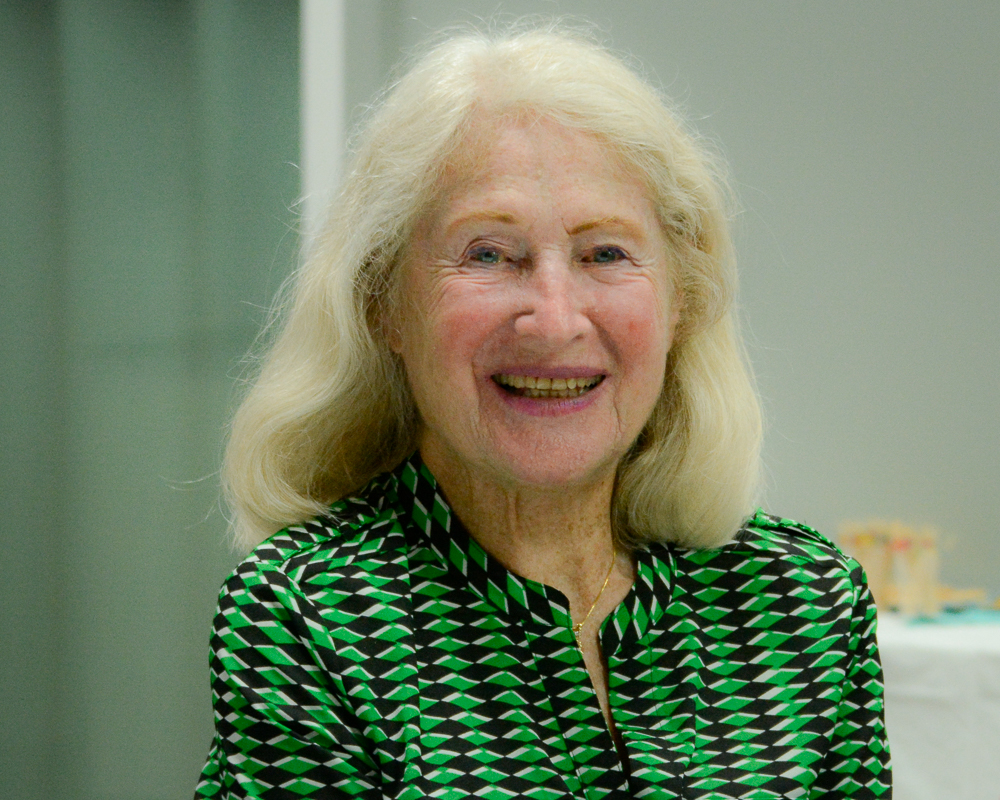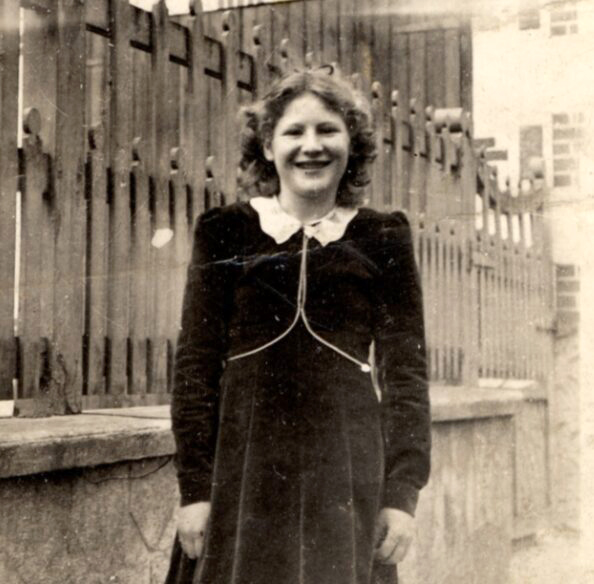
Solange Lebovitz’s parents immigrated to Paris in 1925. Economic prospects had soured in the Transylvania region of what was then the Austro-Hungarian Empire, now part of Romania, and the local peasants resented the Jews, viewing them as economic competition.
Her parents lost everything in the move and started over in a new country where they lived in poverty. Lebovitz, their youngest of six children, was born in 1930 as Sarah Dratler. In France, she would be known as Solange.
World War II squelched the family’s hopes. Germany subjugated Belgium, the Netherlands, Luxembourg and France within six weeks in 1940.
The family decided to send Solange, then 11, into hiding. She ended up on a farm in a tiny village in Normandy with an older couple, the Barbiers.
Here, Lebovitz lived in relative safety for two and a half years, although a “climate of fear” prevailed, she said during a Sept. 12 presentation sponsored by the Holocaust Center of Pittsburgh. She attended public school and weekly church services. The Barbiers were good to her, she said, but she missed her parents. Later, she learned her family paid the couple to take care of her.
Once, German soldiers came to her school looking for Jews, but the school principal must have gotten advance word. She sent Lebovitz to supervise a kindergarten class. When a soldier opened the classroom door, all he saw was the children and a “teacher” with red hair facing the blackboard. He closed the door and left.
“I have been very fortunate all along,” Lebovitz said in a 2022 video for the Eva Fleischner Oral History Project.
The terror escalated in July 1942, when police arrested more than 13,000 Jewish people, including more than 4,000 children, and held them for days at the Velodrome d’Hiver sports stadium in Paris with no food, water or bathrooms.
In a compromise between the French and the Germans, the roundup targeted “foreign” Jews like the Dratlers rather than French citizens. The people at the athletic field were eventually deported to the Drancy transit camp outside of Paris, then to Auschwitz in Poland, where they were murdered.
Lebovitz’s sister brought food for a neighbor trapped in the stadium. On her return, she hid under a table, horrified by what she had seen.

At her urging, the family decided to split up to increase their odds of survival. One brother and Lebovitz’s mother made their precarious way to Limoges, France. Another brother and her father took an apartment in Paris.
To collect a 500-franc reward, someone denounced her father and brother to the police. At 5 o’clock one morning, police knocked on their door. Her father signaled to her brother not to make any noise, and the police left. But a neighbor warned them that the police were getting a warrant to break down the door. The neighbor couldn’t hide them — he would be arrested, too.
Her brother opened a window, crept out on the roof, and helped her father out. Then slid down a drain spout into the alley and ran away.
One brother was arrested and nearly deported, but he had a contagious skin disease. He was sent to a hospital run by nuns, recovered and made himself useful. Later, he escaped into the forest.
Another brother obtained false papers and worked in a restaurant until the owner warned him he would be sent to forced labor if he stayed.
Her parents and at least one brother reunited in Limoges. They moved from hotel to hotel until they managed to bribe a landlord to allow them to stay. They told him they were refugees from the north whose house had been bombed. One day, the landlord said to Solange’s mother, “Oh, you must be Jewish. Your husband doesn’t want to eat pork.”
“My husband has a bad stomach,” her mother made an excuse, but they moved away. Fortunately, the tide of the war was turning.
After the Allies’ D-Day invasion in Normandy on June 6, 1944, Lebovitz stood on the main street of her village and handed out cider from the Barbiers’ farm to American soldiers. “It was wonderful,” she recalled.
She and her immediate family members reunited after the war. In 1952, she married another survivor, Lazar “Larry” Lebovitz, and came to Pittsburgh, where her husband worked as a furniture remodeling salesman.
Lebovitz, who at 94 lives in Squirrel Hill, started on earning her college degree from the University of Pittsburgh when she was 42. Eight years later, she graduated with a double major in English and French literature.
“Many Jewish people never thought that France would ever let [the Holocaust] happen,” she said in a 2020 video “The French Contradiction” with the Holocaust Center of Pittsburgh. “And they were wrong.”
Laura Malt Schneiderman, lschneiderman@post-gazette.com.
Click images to learn more.
Laura Malt Schneiderman
Ed Yozwick
Advertisement
Advertisement